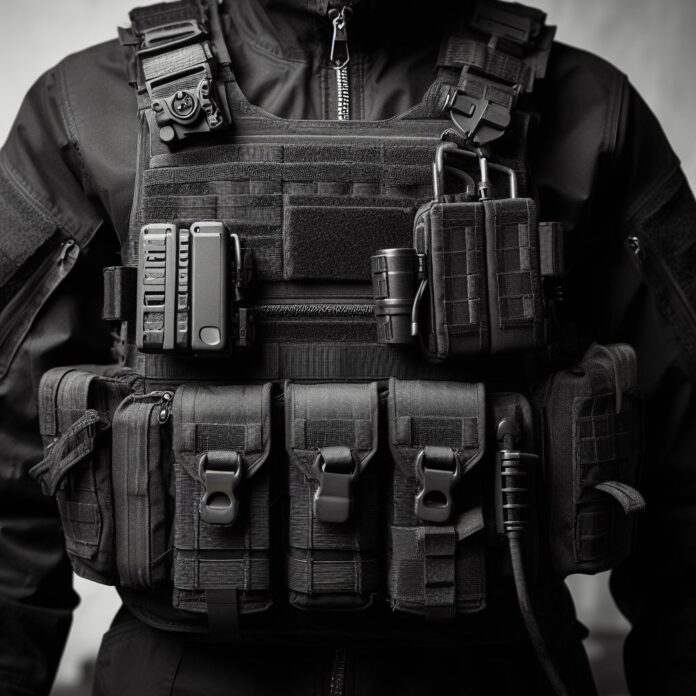Bulletproof vests, also known as ballistic vests, are protective garments designed to offer protection against projectiles such as bullets or other ballistic threats. They are made from durable materials and utilize layers of high-tensile fibers to absorb and disperse the impact energy from ballistic threats, reducing the risk of injury to the wearer. These vests have been a critical component of personal protective equipment for military personnel, law enforcement officers, and civilians operating in high-risk environments.
Bulletproof vests are primarily designed to stop projectiles propelled at high speeds, such as bullets from firearms. These vests offer protection against various types of ammunition, including handguns, rifles, and shotguns. However, the effectiveness of a bulletproof vest depends on its level of ballistic resistance and the specific ammunition it is designed to stop.
While bulletproof vests are effective against ballistic threats, they may not provide the same level of protection against knives and other edged weapons. Understanding the difference between ballistic and stab protection is crucial in assessing a bulletproof vest’s capability to stop a knife attack.
What Are Bulletproof Vests Designed to Stop?
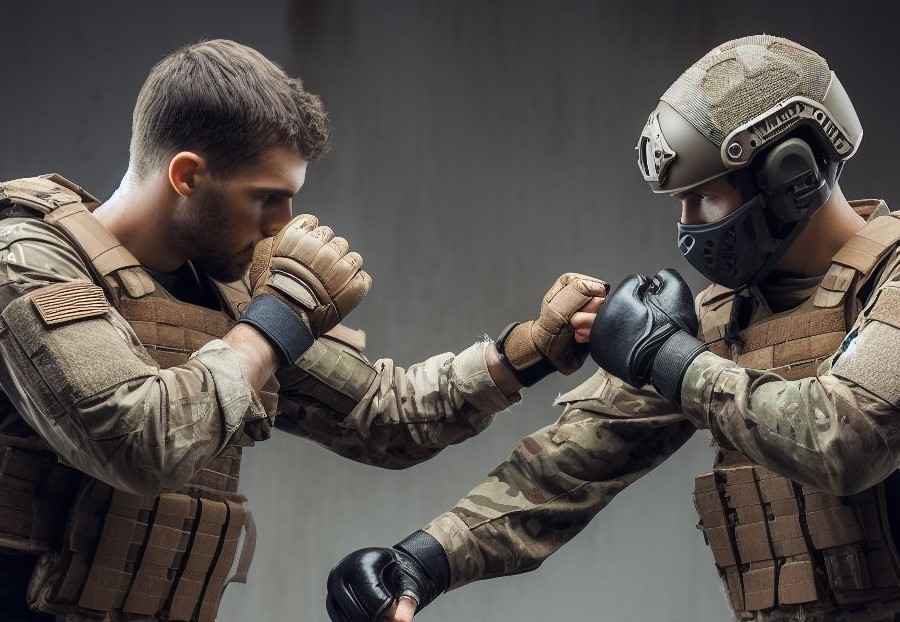
Bulletproof vests are specifically designed to stop projectiles such as bullets or shrapnel from penetrating the wearer’s body. These vests are made from multiple layers of specialized fibers, ceramics, or metal plates that have the capability of absorbing and dispersing the force of impact.
They are intended to provide protection against different types of firearms, including handguns and rifles. The effectiveness of a bulletproof vest depends on its rating, as determined by the National Institute of Justice (NIJ). Vests with higher ratings can offer enhanced protection against more powerful ammunition.
However, it is important to note that bulletproof vests are not designed to stop knives or other sharp objects. The fibers can be easily penetrated or the sharp objects may slip through the gaps between plates. Therefore, it is crucial to be aware of the limitations of bulletproof vests and use appropriate protective gear to defend against various types of threats.
Can a Bulletproof Vest Stop a Knife?
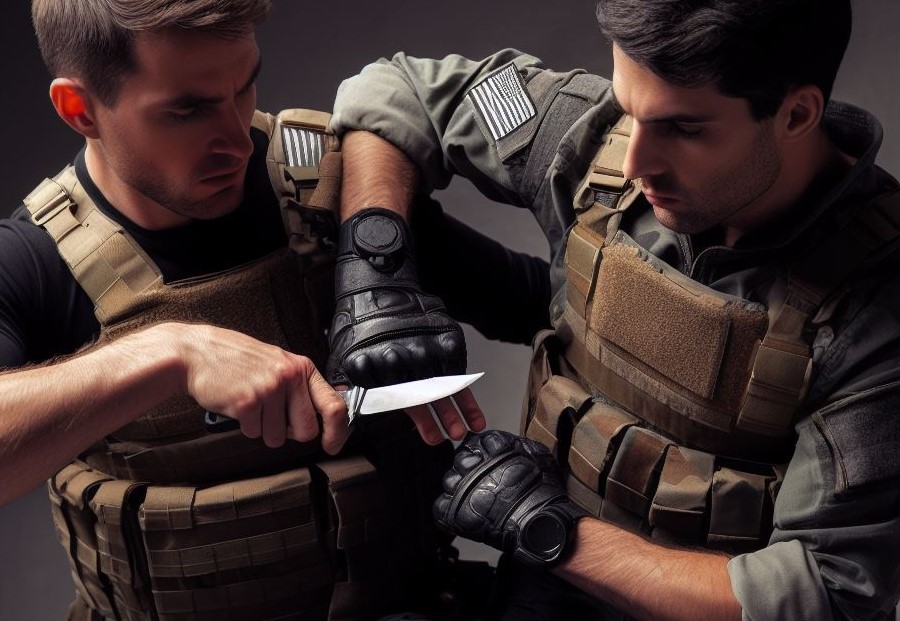
Bulletproof vests are designed to protect against bullets, not knives. However, it is worth noting that a bulletproof vest may offer some resistance to a knife due to the materials used, such as Kevlar or other ballistic fibers.
Nevertheless, these vests are primarily engineered to stop the high-velocity impact of bullets, not the focused point of force from a knife. Consequently, it is crucial to utilize proper protective equipment, specifically stab-resistant vests or cut-resistant clothing, when facing knife attacks or operating in environments with a heightened risk of knife-related incidents.
In order to ensure personal safety in knife-related situations, individuals should consider investing in stab-resistant or slash-resistant clothing specifically designed to withstand knife attacks. These garments incorporate materials that can endure the force and slashing motion of a knife, providing an additional layer of protection.
Moreover, acquiring knowledge in self-defense techniques and maintaining situational awareness can help reduce the risks associated with knife attacks. Always remember, when it comes to safeguarding oneself against knives, it is essential to employ appropriate gear and take proactive measures to stay safe.
Understanding the Difference Between Ballistic and Stab Protection
Understanding the difference between ballistic and stab protection in bulletproof vests can be crucial when selecting the right vest for your needs. By examining their respective capabilities and designs, you can gain a clear understanding of how they differ.
| Ballistic Protection | Stab Protection |
| Ballistic protection is specifically designed to stop projectiles like bullets. | On the other hand, stab protection is designed to resist penetration from sharp objects such as knives, spikes, and needles. |
| Ballistic vests consist of multiple layers of strong and resilient materials like Kevlar or high-density polyethylene. | In contrast, stab vests utilize specialized materials like chainmail or stab-resistant fabrics to prevent knife penetration. |
| The primary focus of ballistic protection is to disperse the energy of the bullet, reducing its impact on the wearer. | Stab protection, on the other hand, is designed to effectively stop and trap the blade, preventing it from cutting through the material. |
| Ballistic vests undergo testing and certification processes according to specific standards, such as the National Institute of Justice (NIJ) standards, to ensure their effectiveness against bullets of different calibers. | On the other hand, stab vests undergo separate testing and certification processes following standards like the Home Office Scientific Development Branch (HOSDB) or the Centre for Applied Science and Technology (CAST) to evaluate their resistance to thrusting and slashing attacks. |
Understanding the difference between ballistic and stab protection is crucial when choosing a bulletproof vest. While some vests may provide a certain level of stab protection, it is essential to select a vest specifically designed for the intended threat. Consulting with experts or manufacturers is recommended to ensure the vest meets the required standards for your needs.
Pro-tip: Always check the certification and testing standards when purchasing a bulletproof vest to ensure it provides the necessary protection. Bulletproof and stab-proof vests have different designs to address specific threats, so it is important to choose the appropriate type based on your intended use.
Testing Standards for Bulletproof Vests
The testing standards for bulletproof vests ensure their effectiveness and reliability in protecting against various threats. These testing standards play a key role in ensuring the overall quality and performance of the vests. One crucial standard used in testing bulletproof vests is the National Institute of Justice (NIJ) Standard-0101.06.
This standard outlines specific requirements for ballistic protection and categorizes vests into different levels based on the type of ammunition they can withstand. For instance, Level II vests have the capability to stop 9mm and .357 Magnum ammunition, while Level IIIA vests can effectively stop .44 Magnum ammunition.
To meet these testing standards, the vests undergo rigorous testing procedures that involve shooting them multiple times with various types of ammunition at specific velocities. The primary goal of these tests is to ensure that the vests successfully stop the bullets without any penetration, providing optimal protection to the wearer.
Another significant testing standard that manufacturers adhere to is the ASTM International Standard F2992. This standard focuses specifically on the vest’s stab and puncture resistance. By subjecting the vest to specific forces and angles of attack, this testing procedure evaluates its ability to withstand knife attacks and other sharp weapons.
By following and adhering to these thorough testing standards, manufacturers can confidently ensure that their bulletproof vests offer adequate protection against a wide range of threats. Therefore, it is crucial for consumers to consider these testing standards when purchasing a bulletproof vest to guarantee they are investing in a reliable and effective product.
Do Bulletproof Vests Provide Adequate Protection Against Knives?
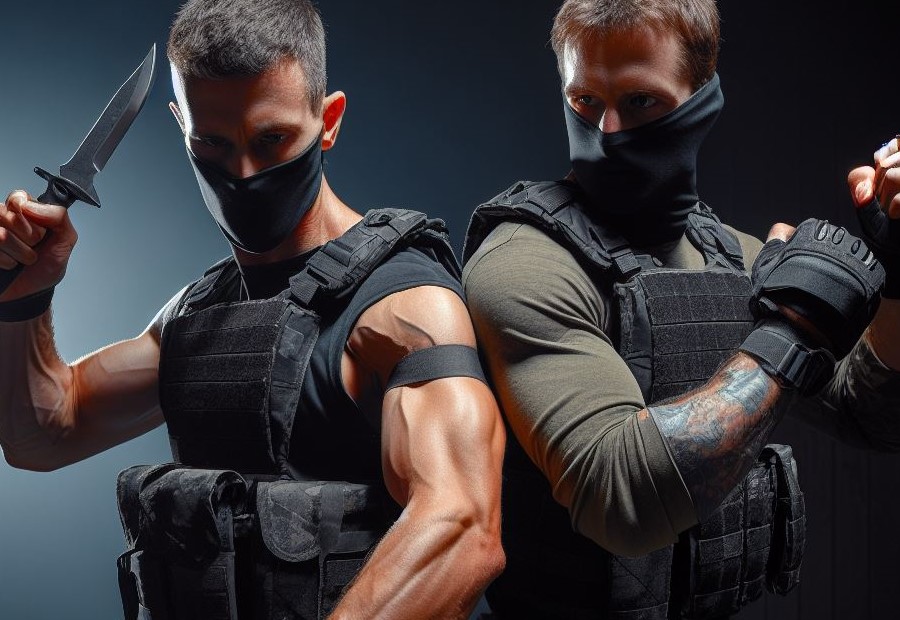
Bulletproof vests do not provide adequate protection against knives. While they are designed to stop bullets and other ballistic threats, they are not specifically designed to resist knife attacks.
Knife attacks involve a different set of forces and actions compared to bullets, making it difficult for bulletproof vests to effectively protect against such threats. The materials used in bulletproof vests, such as Kevlar or other ballistic fabrics, are designed to withstand the high-speed impact of bullets, but they may not provide the same level of protection against sharp blades.
When considering protection against knives, it is important to understand the difference between ballistic and stab protection. Ballistic protection focuses on stopping the penetration of bullets, while stab protection is specifically designed to resist punctures and slashes from knives and other sharp objects. Bulletproof vests may have some limited stab protection, but they are not as effective as vests specifically designed for knife resistance.
To ensure adequate protection against knives, it is recommended to use vests that are specifically designed and tested according to stab protection standards. These vests are made with materials that are better suited to resist knife attacks and provide a higher level of protection. It is crucial to consider the intended use and threats you may face when choosing the right protective gear.
Factors That Affect the Performance of Bulletproof Vests Against Knives
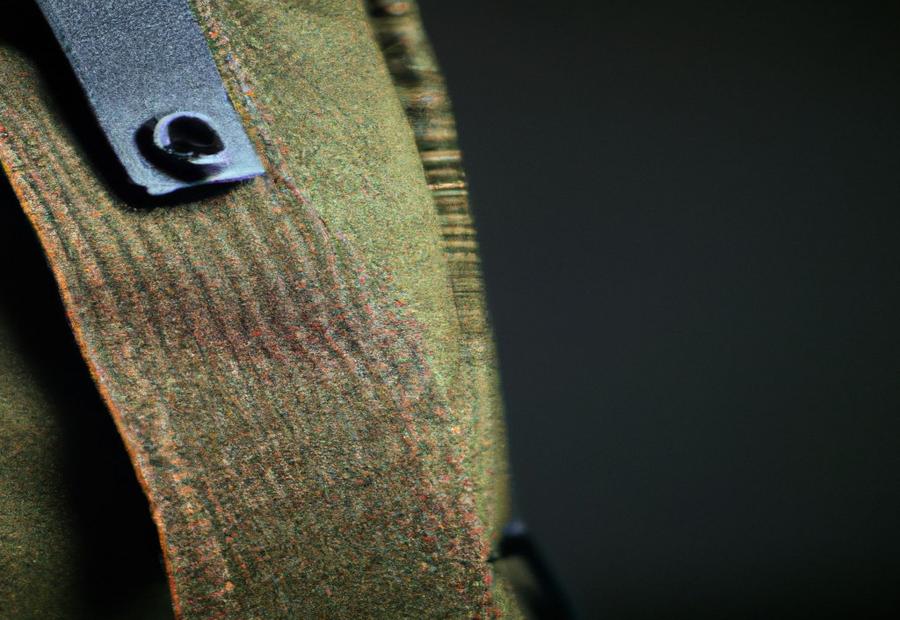
Photo Credits: Paintballbuzz.Com by James Green
Did you know that the effectiveness of bulletproof vests against knives is not solely determined by their ability to stop bullets? In this section, we will explore the key factors that influence the performance of bulletproof vests against knife attacks. From the design and material of the blade to the force of the thrust and angle of attack, each sub-section will shed light on the intricate dynamics at play. Get ready to dive into the fascinating world of what makes a bulletproof vest truly knife-resistant.
Blade Design and Material
Blade design and material are significant factors contributing to the effectiveness of a bulletproof vest against knife attacks. The type of blade used and the material it is made of directly impact its ability to penetrate the vest.
1. Single-edged blades: These blades, commonly found in kitchen and utility knives, have one sharpened edge. They pose a moderate threat and can potentially penetrate certain bulletproof vests.
2. Double-edged blades: Double-edged blades have two sharpened edges, enabling them to inflict deeper and more severe cuts. They present a higher threat level and have an increased chance of penetrating a bulletproof vest.
3. Serrated blades: Serrated blades have small, jagged edges along the cutting surface, causing additional damage and making it more challenging for the vest to resist penetration.
4. Tanto blades: Tanto blades, often present in tactical knives, have a triangular shape. They possess a strong tip and can concentrate force, significantly increasing the likelihood of piercing the vest.
5. Ceramic blades: Ceramic blades are remarkably sharp and can cut through various materials, including bulletproof vests. They pose a particular challenge to vests because their hardness and sharpness can bypass traditional stab-resistant fabrics.
When considering a bulletproof vest for protection against knives, it is crucial to acknowledge the potential threat associated with different blade designs and materials. Evaluating the specific risks you may encounter can guide you in selecting a vest that offers adequate protection against these factors.
It is important to note that bulletproof vests primarily target bullet protection, even though they can provide some level of defense against knives. Vests specifically designed for knife protection may incorporate enhanced features and materials to address the unique challenges posed by blades.
Suggestion: When choosing a bulletproof vest, take into account your specific needs and potential risks. Seek advice from field experts who can offer guidance on the most suitable vest for your intended use and the threats you may face. Stay informed about advancements in vest technology to make an informed choice regarding your safety.
Thrusting Force
Thrusting force is a critical element that significantly impacts the performance of bulletproof vests when facing knives. The ability of a vest to stop or prevent penetration by a knife relies on the force applied during the attack.
Although bulletproof vests are primarily designed for stopping bullets, which carry higher velocities and kinetic energies compared to knives, the force exerted by a knife remains a potential threat. This threat becomes even more substantial when the knife is driven with substantial strength.
The effectiveness of a bulletproof vest against thrusting force is directly related to its level of stab protection. Stab-resistant vests undergo specific design alterations to withstand the force exerted by knives and other sharp objects. Additional layers of strong materials, such as Kevlar, are incorporated into these vests to absorb and distribute the force resulting from a knife thrust.
It is essential to note that while stab-resistant vests can provide protection against thrusting force, they may have limitations when faced with certain knife types, such as those featuring serrated edges or specially designed tips. Manufacturers subject stab protection vests to standardized testing methods to ensure their effectiveness against specific knife threats.
Angle of Attack
The importance of the angle of attack cannot be understated when it comes to the performance of bulletproof vests against knives. When someone initiates an attack with a knife, the angle at which the blade makes contact with the vest determines the level of protection it can provide.
If the knife is thrust directly perpendicular to the vest, there is a higher likelihood of the protective material being penetrated.
However, if the knife is angled or deflected, the chances of the vest successfully stopping the knife are increased.
The angle of attack also plays a significant role in redistributing the force of the knife’s impact. When the blade strikes the vest at a steep angle, the force becomes concentrated on a smaller area, making it more challenging for the vest to withstand.
Conversely, if the blade approaches at a shallow angle, the force spreads out over a larger surface area, thus enhancing the vest’s resistance to penetration.
It is worth noting that while bulletproof vests primarily focus on providing ballistic protection, certain models also incorporate stab protection.
These vests are specially designed to withstand knife attacks, taking into account various factors including the angle of attack, among others, that influence the performance of the vest.
Are There Bulletproof Vests Specifically Designed for Knife Protection?
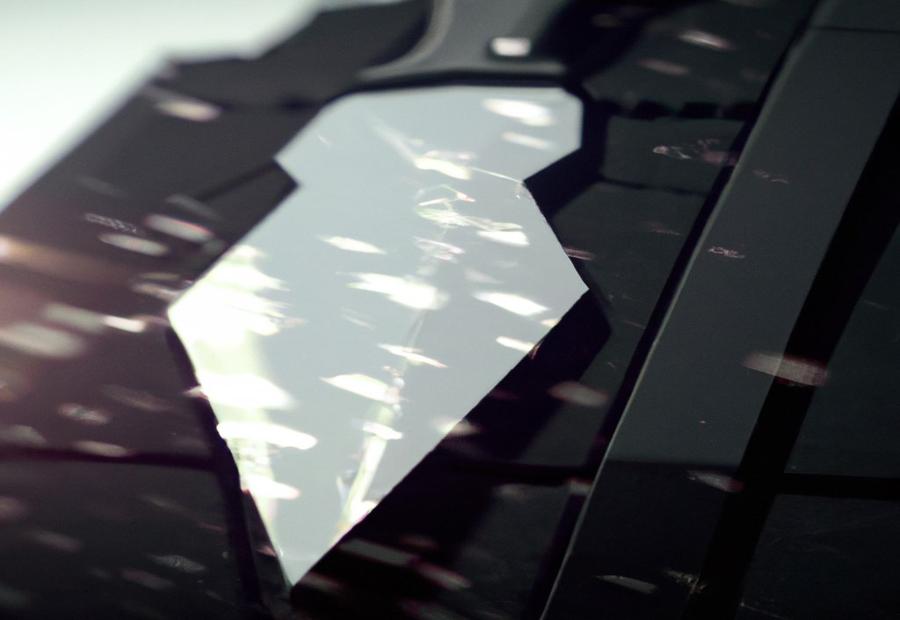
Photo Credits: Paintballbuzz.Com by Joseph Flores
Bulletproof vests are primarily designed to protect against bullets, but there are also vests specifically designed for knife protection. These vests are made with additional layers or materials that can resist penetration from sharp objects. They are commonly used by law enforcement officers, prison guards, and security personnel who may encounter knife attacks.
These knife-resistant vests are made with strong fibers and fabrics, such as Kevlar or Dyneema, that are capable of stopping and absorbing the force of a knife thrust. They are tested and certified to ensure they meet the necessary standards for knife protection.
When choosing a bulletproof vest for knife protection, it is important to look for vests that specifically state they are designed for this purpose. Regular bulletproof vests may not provide sufficient protection against knives. It is also crucial to consider the level of protection needed based on the potential threat and the specific requirements of the job.
Frequently Asked Questions
Can a bulletproof vest stop a knife?
No, a bulletproof vest, or ballistics vest, is not designed to stop a knife. While it may provide some level of protection against a knife attack, it does not offer the same level of effectiveness as stab-resistant armor.
What are the levels of resistance in body armor?
The National Institute of Justice (NIJ) has developed ratings for body armor’s resistance against stabs and slashes. Level 1 protects against attacks up to 17.7 foot-pounds, level 2 up to 24.3 foot-pounds, and level 3 up to 31.7 foot-pounds. Level 1 spike-rated armor also provides protection against equivalent intensity slash threats.
What is the difference between a bulletproof vest and a stab-proof vest?
A bulletproof vest, or ballistics vest, is designed to disperse the kinetic energy from bullets, while a stab-proof vest is made of strong materials that catch the weapon and prevent it from making a cut. Bulletproof vests redirect energy across the armor, while stab vests allow the edged weapon to penetrate into the material and stop it from cutting through completely.
Can stab-proof vests protect against spiked weapons?
Some stab-proof vests also offer protection against spiked weapons. They are designed with materials or construction methods that can withstand spiked attacks, preventing penetration by these weapons.
Can bulletproof vests protect against gun crime?
Yes, bulletproof vests are suitable for areas prone to gun crime and can protect against small ammunition fire. However, they are not specifically designed to stop knife attacks or other edged weapons.
Are there body armor options for female individuals?
Yes, there are ballistic vests specifically designed to fit a woman’s body shape. These vests provide the same level of protection as their male counterparts while considering the differences in body proportions.

